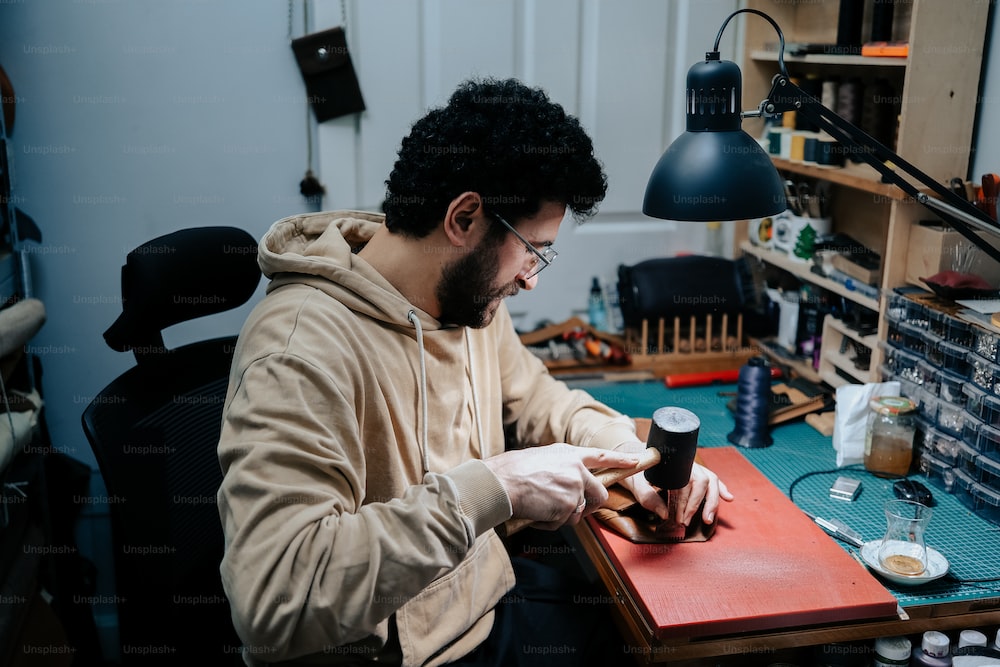
Woodworking is an age-old craft that has been enjoyed by people for centuries. It’s a fulfilling hobby that allows you to create beautiful and functional objects from wood. And thanks to the availability of power tools and screws, woodworking has become more accessible than ever. In this article, we’ll explore the basics of woodworking from home, including the tools and materials you’ll need, the advantages of using power tools, and the benefits of using screws to join pieces of wood together. We’ll also delve into advanced woodworking techniques that can take your projects to the next level.
The Basics of Woodworking from Home
Before you can start woodworking, you’ll need to gather some basic tools and materials. At a minimum, you’ll need a saw, a drill, a hammer, sandpaper, and some wood glue. You can start with these basics and gradually add to your collection as you become more experienced.
When selecting wood for your projects, you’ll want to consider factors such as the species, grade, and moisture content. Different types of wood have different characteristics, such as hardness, grain pattern, and color. The grade of the wood refers to its quality, with higher grades having fewer knots and defects. And the moisture content is important because it affects the stability and durability of the wood.
When it comes to joining pieces of wood together, there are several types of joints to choose from, such as butt joints, lap joints, and mortise and tenon joints. The type of joint you use will depend on the project you’re working on and the strength and appearance you want to achieve.
Using Power Tools for Woodworking at Home
Power tools have revolutionized woodworking, making it faster, easier, and more precise. While hand tools still have their place, power tools can save you time and effort, and help you achieve more professional-looking results.
Some of the most common power tools used in woodworking include circular saws, jigsaws, routers, sanders, and drills. When using power tools, it’s important to follow safety guidelines to prevent injuries. This includes wearing eye and ear protection, keeping your work area clean and organized, and using the proper techniques for each tool.
In addition to safety, you’ll also want to take care of your power tools to keep them in good working condition. This means cleaning and lubricating them regularly, storing them in a dry and secure location, and replacing worn or damaged parts as needed.
Working with Screws in Woodworking
Screws are a popular choice for joining pieces of wood together because they are strong, durable, and easy to use. Unlike nails, screws can be removed and reused if needed, and they provide a stronger connection. And unlike glue, screws allow for some movement between the pieces of wood, which can be important in some applications.
When selecting screws for your project, you’ll want to consider the length, diameter, and thread pattern. The length of the screw should be appropriate for the thickness of the wood, with at least half an inch of penetration into the second piece. The diameter should be appropriate for the weight and load-bearing capacity of the joint. And the thread pattern should match the type of wood and the desired holding power.
To use screws, you’ll need a drill and a bit that matches the size of the screw. You’ll want to drill a pilot hole first to prevent the wood from splitting, and then drive the screw in using a screwdriver or power driver. Be careful not to overtighten the screw, as this can strip the threads or damage the wood.
Advanced Woodworking Techniques
Once you’ve mastered the basics of woodworking, you may want to explore more advanced techniques, such as carving and woodturning. Carving is the process of removing material from a piece of wood to create a three-dimensional shape or pattern. This can be done using hand tools such as chisels and knives, or power tools such as rotary tools and angle grinders. Woodturning, on the other hand, is the process of shaping a piece of wood while it rotates on a lathe. This can be used to create cylindrical shapes such as table legs and bowls.
Learning these techniques can take time and practice, but they can add a new level of creativity and artistry to your woodworking projects. There are many resources available for learning these skills, including books, videos, and classes.
Another advanced technique is the use of veneer, which is a thin layer of wood that can be applied to a surface to create a decorative effect. Veneer can be used to create intricate patterns and designs that would be difficult to achieve with solid wood alone. To apply veneer, you’ll need to use a special adhesive and apply pressure to ensure a strong bond.
Conclusion
Woodworking from home is a rewarding hobby that allows you to create beautiful and functional objects from wood. With the availability of power tools and screws, woodworking has become more accessible and easier than ever. Whether you’re a beginner or an experienced woodworker, there’s always something new to learn and explore in this timeless craft. So grab your tools and start creating!
In conclusion, woodworking from home is an enjoyable and fulfilling activity that can provide hours of entertainment and satisfaction. With the right tools and materials, anyone can learn to create beautiful and functional objects from wood. Whether you’re making furniture, toys, or decorative items, woodworking allows you to express your creativity and craftsmanship in a tangible way. So if you’re looking for a new hobby or just want to try your hand at something new, give woodworking a try. You may be surprised at what you can accomplish!





